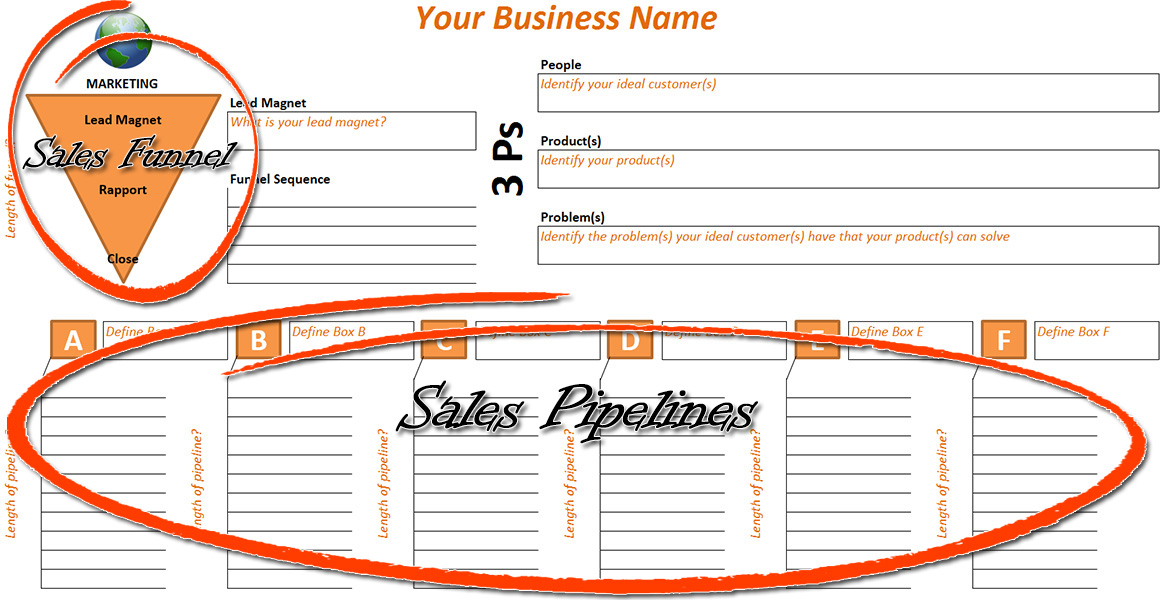While this strategy works well … there's now a “smarter” version I recommend you checkout by clicking here.
Keeping up with leads, prospects, and customers can be a very time consuming activity.
The thing is – it doesn't have to be.
An automated sales system, sometimes referred to as an automated marketing system, is a combination of education based marketing, database marketing, and email marketing (automation) in a planned, systematized, strategy with the purpose to accomplish two tasks:
- Convert leads into paying customers
- Maximize the lifetime value of those customers
In this article, I'm going to break down an automated sales system into its parts. In understanding the parts, you’ll be able to understand the whole concept.
What It Is, What It Isn't
An automated sales system is a system that is methodically planned, implemented, and optimized to convert more leads into customers and to maximize those customers' lifetime value.
An automated sales system is not a program, application, tool, or plugin that you simply add to your site and call it a day.
Sure, several tools are used in the implementation of the system. If your business needs a $10/mo autoresponder service – great! If your business needs a $1,000+/mo autoresponder service – great! The tools used are whatever fulfills your business's needs.
The tools do not make the automated sales system – people do.
- Related Article: Why you need us
Two Parts
Sales Funnels
The sole purpose of a sales funnel is to take a person and convert them into a customer by taking them through the buying process.
- Related Article: How does a sales funnel work?
Sales Pipelines
The sole purpose of a sales pipeline is to take a customer and multiply their lifetime value by maintaining relationships and recommending complementary products and services.
- Related Article: How do sales pipelines work?
Graphic Representation

How Is It Automated?
Email is the primary method of communicating with leads, prospects, and customers. There are many tools and services that assist with automatically delivering emails to individuals based on a wide variety of segmentation criteria. For example, individuals can be segmented based upon which links they click, which products and services they are interested in, specific dates, and more.
The services that handle the email automation are called autoresponders and there are a slew of them. Their pricing can range from about $10/mo to $1,000+/mo depending on features and the number of contacts.
- Related Article: What is an autoresponder and how does it work?
Retargeting
Retargeting, sometimes referred to as remarketing, is a type of advertising that “follows” your prospective leads, actual leads, prospects, and customers around the Internet based on their interactions with your business.
While retargeting is truly powerful when it comes to turning prospective leads into actual leads, it’s also a powerful tool to communicate with your current leads, prospects, and customers.
Email combined with retargeting increases your “megaphone” and enables you to reach the greatest percentage of individuals who are traveling through your sales funnels and sales pipelines.
- Related Article: How does retargeting work?
What Type Of Content Should Be Sent?
Determining what to send leads, prospects, and customers can be the hardest part in the development of an automated sales system; however, ensuring each piece of content has a specific goal will make the task a lot easier. The two goals for the content is to either provide value or drive action.
Value
Value content is information that serves no purpose other than to inform or entertain your customer. You’re not trying to sell anything directly; however, this content will educate the customer on what you’re about to sell them. This value content may be as simple as a link to a YouTube video that helps your customer better understand something or learn something new.
Value content is what builds trustworthy relationships.
Action
Action content attempts to get the individual to perform an action. This type of content can also be informative and/or entertaining (it should be); however, its main purpose is to drive action. The action can be to make a purchase from you or an affiliate, a visit to your store, to click an ad, to sign up on another website, etc.
Action content drives customers to perform an action.
